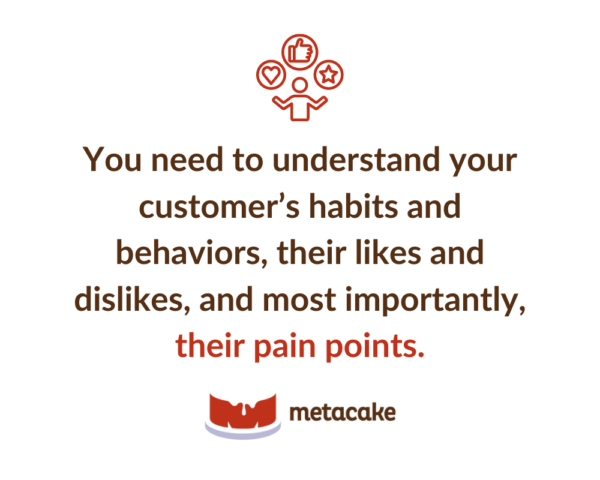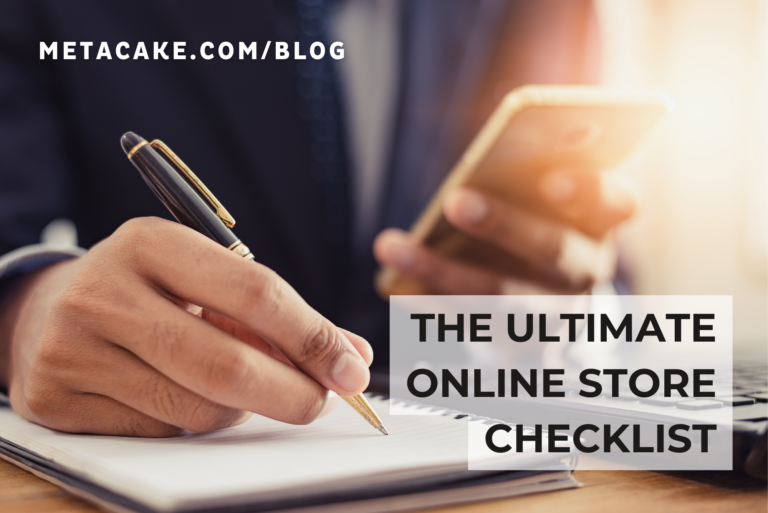If you’re just starting out with your ecommerce store, it can be overwhelming. There’s so much to manage and keep track of. But don’t worry; we’ve got you!
We’ve compiled an online store checklist of all the things we think you should consider as you go about launching your new store.
Already have a running ecommerce store? Don’t worry, this is a good reminder of everything you should be doing on an ongoing basis, so read on!
What’s in an Online Store Checklist?
This online store checklist is fairly long but highly rewarding. We’ll touch on everything you need to build and maintain a successful ecommerce business.
Know Your Company Vision Internally
We’re talking about your brand. You need to know your brand and why you’re in business, and you need to communicate this clearly throughout your entire organization.
Your brand is more than what it sells. It’s not enough to focus solely on products and shipping. Get everyone in your organization on the same page, establish your culture, and align your core values.
Know Your Target Customer
You need to know who your ideal customer is. We don’t mean just basic demographics and some vague idea of what they might like. We mean intimately.
You need to understand your customer’s habits and behaviors, their likes and dislikes, and most importantly, their pain points.
Thinking through this in detail will not just validate whether or not your products will work with this audience; it will also determine how to reach your ideal customers (through which channels and which types of messaging).

Define Your External Messaging
This should stem directly from your brand and your target customer. It’s a combination of both.
Your external messaging should clearly explain how your brand solves a pain point for your ideal customer. Answer the question, “How are you going to make their lives easier and/or better?”
Include an “About” Page or Section
Customers feel more comfortable buying products online from companies they know, so include information about who you are, what the company is about, and what it stands for directly on your site.
Show That You’re Reliable and Trustworthy
Customers also feel more at ease buying products online from companies they trust. Incorporate trusted symbols to assure the security of your checkout process, and make sure information about guarantees and warranties is easily available.
Buying something online from a new source can be stressful and scary for a customer, so be upfront, clear, and consistent throughout your site and help alleviate their concerns.
Provide Helpful Tools Along the Conversion Path
Another strategy to alleviate customers’ fears or distrust is to address their queries before they ask. For example, if you’re selling clothing, include size guides.
Here are some other helpful tools:
- Testimonials: Include testimonials on your website.
- Ratings and Reviews: Include ratings and reviews on individual product pages.
- FAQ: If you have any frequently asked questions via email or phone, make this information visible on your website so that your customers don’t have to inquire.
Including this type of information minimizes friction in the conversion funnel and allows your customers to make a rapid decision when purchasing your product.
Live Up to Your Commitments
You should use your messaging as an opportunity to remedy a real pain point for your target customers. Make sure you follow through with this commitment. In fact, you should not only meet but also surpass your customers’ expectations to ensure that they return time after time.
Choose an Ecommerce Platform
Unless you plan to build and maintain a custom ecommerce platform — which we highly advise against as it’s rarely worth the investment for large corporations, let alone new stores starting out — you’ll need to select an off-the-shelf platform to run your store.
We like Shopify! However, the platform you choose should be determined by your specific store and needs. Any off-the-shelf platform will come with plenty of templates to choose from to get you started.
Have Stellar Product Pictures
The old adage “a picture is worth a thousand words” is especially pertinent in an online store checklist.
You’re not going to sell anything without high-quality images of your product. However, it’s better to have no pictures than lousy pictures, because lousy pictures will only hurt your cause.
The moral of the story? You need to have stellar product pictures in order to sell. No pictures, or lousy pictures, is simply not an option.
Make sure you have images of your product both alone and in context. When buyers see your product in action, it helps them visualize it in their own lives, which increases conversions.
Create Product Descriptions Appropriately
The objective is to present enough information for someone to make an informed purchasing decision without overwhelming them. Customers must be able to swiftly scan product information and details to determine whether a product is suited for them or not.
If you can afford it, we recommend hiring a copywriter. Amazing product descriptions make all the difference (particularly when combined with amazing photos).
Add Social Proof and Reviews to Your Site
Trust is contagious. Customers are more likely to have confidence in your ecommerce site if others are giving you good reviews.
To increase your social proof, ask customers for reviews after they make a purchase.
Design a Visually Appealing and Easy-To-Use Site
It’s ideal if you can create the front end of your ecommerce site from scratch, allowing you to tailor it to your products and brand.
Even if you don’t, there are excellent templates available that offer a pleasant user experience. Make sure you choose one that will be easy for your users to follow.
Define, Track, and Monitor Your KPIs
Data will help you make better marketing decisions in the future, but you must track the correct metrics.
Determine which metrics are critical to your company’s performance. After that, establish a plan for how you’ll use these metrics to make real-time decisions to alter your marketing strategy and improve your business.
Be Hyper-Focused on Customer Acquisition
There are several effective strategies to market these days that allow you to calculate your exact ROI. Target your audience with the correct message and channels, and track your results to choose where to invest more money and where to cut down on marketing.
Build Contextualized Landing Pages for All Your Marketing Campaigns
If you’re spending money to drive people to your website, be sure to create landing pages that “maintain the scent” of your campaign messaging and ads.
If you’re offering a discount or highlighting a certain product, it should appear on the page the customer lands on after clicking on your ad. This will result in a far higher conversion rate than simply dropping people into your homepage or a product category page.
Make Shipping Transparent and On Time
Many customers won’t consider shopping on your site if they can’t get free shipping, at least above a certain threshold. We usually recommend following this pricing strategy for shipping.
If you charge for shipping, make sure that the price of shipping is clear from the get-go. If it’s a surprise at the end of checkout, you’ll likely see fewer sales.
Commit to Excellent Customer Service
The customer comes first. And the surest way to earn your customers’ loyalty is to go above and beyond when they have a concern or an issue.
So, train exceptional customer service agents and, whenever possible, be generous to your customers.
Offer a Worry-Free Purchase Experience
Another approach to converting your customers into devoted fans is to remove all of the risks. Provide money-back guarantees, warranties, and/or free and easy returns.
Plan Offers and Promotions and Make Them Shareable
Some businesses refuse to offer discounts or promotions on their products because they believe it’ll diminish the perceived quality of their product or brand. While we understand this thought process, price and quality do not have to be inherently linked. Let your product quality speak for itself.
Promotions are an excellent way to get the word out about your company, especially when you’re just starting out. And whatever you do, make all of your promotions easily shareable so that customers can spread the word for you.
Set Up Follow-Ups for Abandoned Carts
Following up on abandoned carts is low-hanging fruit. These customers have gone through the trouble of exploring your product category and adding items to their cart.
They’ve expressed sincere interest, so don’t just let them go if they don’t complete the checkout.
Include Retargeting Campaigns in Your Marketing Mix
This is another excellent technique to follow up with clients who have visited your website and have a high conversion rate, particularly if they’ve reached the product detail pages.
Just be sure you don’t disturb your clients by following them around the internet too soon or too frequently.
Set Up Post Conversion Emails
Conversion should not mark the conclusion of the story. People who’ve previously purchased from you are more inclined to do so again, and if they become fans, they may even recommend your business to their network.
Make sure to use email marketing wisely and keep the information flowing. Create a long-term relationship with your customers by offering valuable material that increases their lifetime value.
Bonus points if you do the following as well:
Optimize Your Site Experience Through CRO
CRO (conversion rate optimization) allows you to systematically and scientifically increase your conversion rate over time, making all of your marketing activities more successful.
Sounds too good to be true, right? Well, it is.
Learn more about CRO and what a vital role it plays for your ecommerce store.
Personalize Your On-Site Experience
Wherever possible, use personalization software to make your experience more focused and relevant to each individual customer who visits your site. This software dynamically changes your site experience in real time based on a customer’s data, history, and behavior.
The Ultimate Online Store Checklist: Final Thoughts
We warned you this wasn’t a short checklist, but we hope you found it to be a rewarding one. If you’re overwhelmed and need a hand navigating through this online store checklist, reach out! We’re always happy to help.
